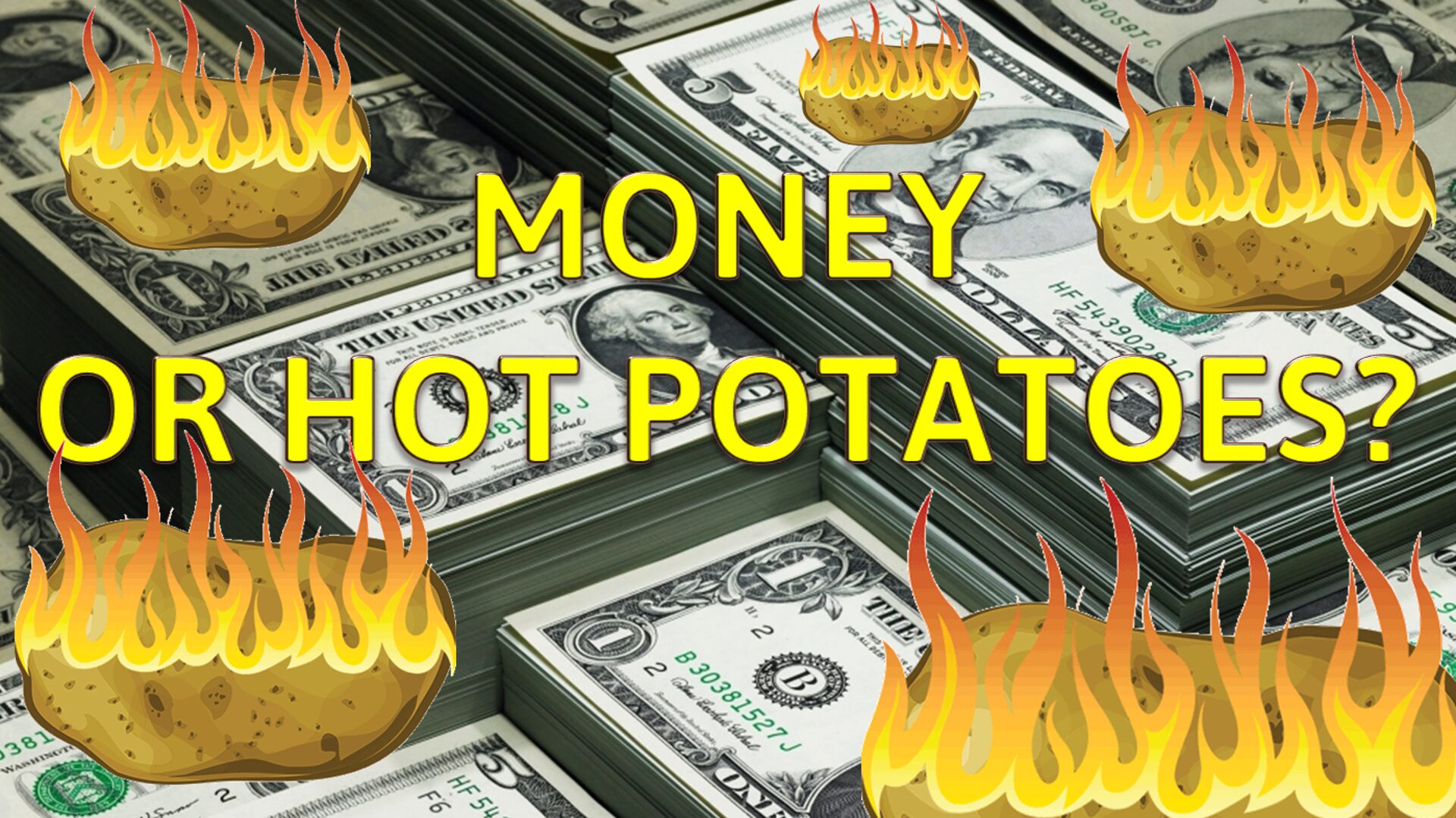
We can easily find plenty of articles, posts and detailed studies about the crucial role that Money would have had in regards with the relatively recent Great Recession of 2007-08 that is still hurting us.
Amongst them, we found an interesting synthesis in “That Film about Money”. You should check it out, because it’s concise, smooth and quite amusing as well. At a certain point, it states that Money is like a Hot Potato: as soon as the banks get it, they work hard to put it into circulation reserving only a small fraction of it, thus generating an enormous multiplying effect in the monetary base. This “mechanism” is technically called fractional banking. Through fractional banking, money is not a material thing: it’s mainly virtual, and therefore it is based on trust. In other words, our money is in bank as far as we believe it is in there; if everyone decides to withdraw all their money at the same moment, the banks would quickly run out of it, and collapse.
This reasoning is undeniable up to this point, because it is actually how things work. But then these concepts get pushed a bit too far, inducing the watcher to believe that this mechanism is the key problem, because it would generate a disproportionate indebtedness inside the system which may turn into economic crises. In other words, it makes the banks look like the devil, and all the others – businesses, governments and individuals – the victims.
The question is: With the current economic rules, if we create equivalence (or less divergence) between monetary base available and bills and coins in the banks’ vaults or people’s hands, would the system become solid and well-functioning? Our answer is: No, it would not.
In fact, we could look at this whole theme using a completely different point of view. If the system, in order to work, needs a certain monetary base, and the banks’ multiplier effect allows it to achieve this result with a much smaller quantity of currency, then banks are basically helping reduce CO2 emissions and waste of materials, and consequently protecting the environment.
The only interesting question we could ask ourselves about Money is: Why in the 21st century, do we still need to produce bills and coins? Couldn’t we make the system work without them? As we all know, starting from the primitive bartering system, we evolved into using coins made from precious metals, then we started using symbolic tokens with values equivalent to precious metals reserves (gold, silver, etc.), and finally adopting bank notes, paper money similar to those in the Monopoly game, and coins. Why did we stop there, instead of leveraging more new methods (e.g. on-line payments) that would allow to completely zero out currency production?
Apart from this question, in our opinion there is no real interest in analyzing the role of money. As we all know, money is simply a medium of trading used by the real economy “to play its music”. If we really want to understand economy and its dynamics (including crises), we need to go in depth and analyze its rules, and not the means it uses.
The common tendency is to channel a lot of attention on secondary or even misleading topics, which plays in favor of maintaining the status quo. Instead, we propose something different: to focus on the causes, and not on the effects. Only by changing perspective and abandoning the paths of the deceiving analyses, we can start to find real solutions to the profound problems that afflict our society.
The book Project Humanity 7.0 strives to familiarize and immerse the reader with a new possible system, where crises cannot exist by definition, because the underlying economic rules are different from today’s.
Helping to understand the real root causes of our current issues, and proposing concrete and not-too-complex changes for a better world, is our mission. This is Project Humanity 7.0
Are you interested in future articles?